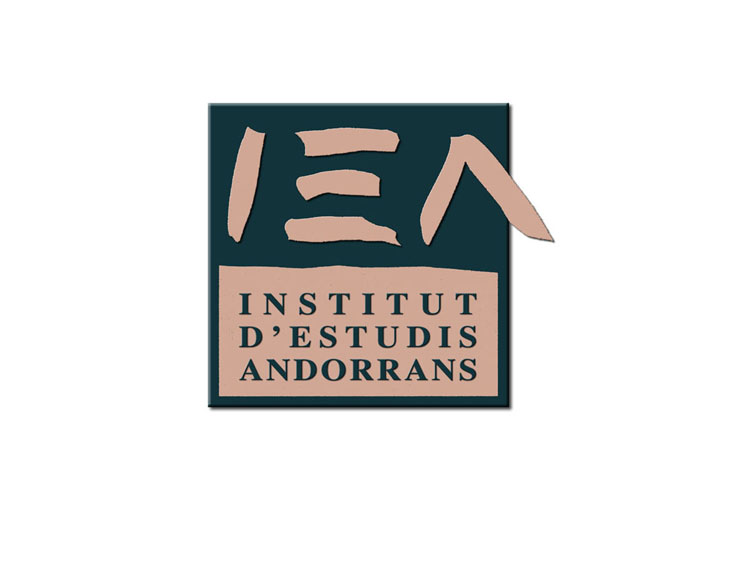CLIMPY - Characterisation of climate change and provision of information for adaptation in the Pyrenees
1. Challenges for the project
In the Pyrenees mountain range the general tendency to progressive warming, combined with the regional changes in land use, generate a complex scenario in which the natural and socioeconomic systems are highly sensitive to possible variations in current and future climatic conditions. In this context, the CLIMPY project aims to contribute to broadening the current understanding of the climate of the Pyrenees and of the patterns of seasonal variation in its main components, such as temperature, precipitation and snow cover, as a basis for implementing policies for adaptation to climate change. The proposal provides continuity with the Climate Action of project OPCC-EFA235/11, and builds on the established cooperation among the main centres for study of the Pyrenean climate. At the same time, it fulfils the need to offer a sustainable and updateable initiative capable of delivering useful diagnoses of climate behaviour in the long term.
The project is based on the following priority actions: creation of an extensive high-quality, harmonised database of temperature, precipitation and snow cover; development of climate indicators which permit a complete diagnosis of the observed tendencies, which can be updated in the framework of the Pyrenees Climate Change Observatory (OPCC); analysis of the distribution of snow cover and its spatial and temporal variation; development of future climate scenarios which assist in the preparation of recommendations and adaptation measures.
The approach starts from a global territorial perspective, in which, going beyond administrative borders, climate is understood as a variable which is continuous in space, and which requires joint protocols for action on the information, the results and their spatial manifestation. It will make use of a common multidisciplinary methodology which will enable evaluation of the impacts on the territory and on the different economic sectors. In this way, it would contribute to pooling knowledge on climate change, and to developing strategies and main lines of action for the OPCC.
2. Objectives of the project
The basic objective of the CLIMPY project is to know the evolution and the tendencies of the climate of the Pyrenees in the context of global change, via the unification and harmonisation of existing information, the development of climate indicators and the realisation of forecasts, with the aim of reducing vulnerability to the impacts of climate change, as well as adapting to its effects through knowledge transfer.
The specific objectives of the project are:
- Creation and harmonisation of a database of temperature, precipitation and snow cover for the Pyrenees. To achieve this, the project will undertake the collection, quality control and harmonisation of the climate measurement data available in the meteorological services of France, Andorra and Spain (AEMET and SMC) for the period 1950-2015.
- Definition and calculation of indicators of temperature, precipitation and snow cover, for monitoring climatic signals and for the diagnosis of climate trends, according to criteria defined at international level so as to guarantee that the results can be analysed at a global level.
- Production of climate forecasts for the Pyrenees based on the new IPCC AR5 scenarios, as a general reference framework for the evaluation of climate change impacts, vulnerability and adaptation.
3. Methodology
The study of the climate will take as its focus the integration of territorial and methodological information, so as to overcome the current fragmentation in different administrations and to facilitate access to the results. The creation of the climate database will pay special attention to the quality control process for the data, and, in particular, to the analysis of homogeneity and the subsequent generation of the time series for temperature and precipitation. The common methodology to be followed is that defined in the action COST ES0601 HOME, and the period to be considered is 1950-2015. The monthly data will be used to analyse climate trends and as input to the climate models; the daily data will be used to produce 1x1 km grids of maximum, minimum and mean temperature, and of precipitation, together with the corresponding cartography.
The snow cover database will be developed using the network of snow poles and instrumental data available since 1980 in the snow gauging network of Meteo-France, CENMA, SMX and AEMET, together with in situ measurements taken from the ERHIN network of snow poles (starting in 1985) and the remote snow level measurement network SAIH. The information will be completed using remote sensing data, using MODIS, LANDSAT and SENTINEL images. With these data it will be possible to analyse the annual changes, the variability and the trend in snow cover in recent decades; in addition, the modelling of snow cover in the Pyrenees will be done using the SAFRAN and CROCUS models.
This information will be used to evaluate climate trends via a set of quantitative indicators, which will make it possible to compare the results for the Pyrenees with the results for other areas of the planet. The CLIMPY project will make use of 10 calculated climate indicators, recommended by the World Meteorological Organisation, which are based on temperature and precipitation variables considered essential to characterise patterns of climate behaviour and variability.
The estimation of climate change forecasts will be achieved using two complementary methodologies which are based on statistics and on dynamic algorithms, and on the generation of a reference analysis for daily temperature and precipitation with a high resolution both horizontally (5 km grid) and vertically (SAFRAN reanalysis with 300 m altitude). The forecasts will be obtained from the outputs of a set of global climate models (GCM) from CMIP5 (19 models) and from combinations with regional climate models (RCM) from Euro-Cordex (13 combinations GCM/RCM), taking into account four emissions scenarios (RCP2.6, RCP4.5, RCP6.0, and RCP8.5).
4. Results
The results of the project are oriented towards diverse users, both direct and indirect: first, to working groups associated with the study of the natural mountain environment; second, to organisations involved in land management and planning, which need to work together on actions motivated by climate change. They are the following:
- Creation of a database of monthly temperature and precipitation values for the period 1950-2015, with quality control and harmonisation, for the main meteorological stations in the Pyrenees.
- Creation of a grid of daily temperature and precipitation data for the whole Pyrenees range, at 1x1 km resolution, for the period 1981-2015.
- Development of a snow cover database for the period 1977-2015 based on existing measurement data together with satellite imagery (MODIS, LANDSAT-8 and SENTINEL-2) for the period 2000-2015.
- Climate indicators for temperature, precipitation and snow cover, which will enable assessment of climate trends and can be used as input to climate models.
- Regionalised scenarios of climate change, which will make it possible to develop specific studies of impact and vulnerability, and to assess the requirements for adaptation in various sectors and ecosystems in the Pyrenees.
- Climate mapping and detailed graphic outputs corresponding to the subjects analysed.
5. Project partners
| Partners | Corporate logo | Region / CCAA |
|---|---|---|
| UNIZAR. Universidad de Zaragoza | Aragon | |
| Météo-France | Others | |
| AEMET. Agencia Estatal de Meteorología de España | Others | |
| Servei Meteorològic de Catalunya | Catalonia | |
| IPE-CSIC. Instituto Pirenaico de Ecología. Consejo Superior de Investigaciones Científicas | Others | |
| CESBIO. Centre d´Etudes Spatiales de la Biosphère. Université Paul Sabatier. | Nouvelle-Aquitaine | |
| IEA-CENMA. Institut dEstudis Andorrans. Centre d´Estudis de la Neu i de la Muntanya d´Andorra. |
Andorra |
The project has been 65% cofinanced by the European Regional Development Fund (ERDF) through the Interreg V-A Spain France Andorra programme (POCTEFA 2014-2020). POCTEFA aims to reinforce the economic and social integration of the French–Spanish–Andorran border. Its support is focused on developing economic, social and environmental cross-border activities through joint strategies favouring sustainable territorial development.
PYRENEAN CLIMATE CHANGE OBSERVATORY
Avenida Nuestra Señora de la Victoria, 8
22.700 - Jaca
Huesca - España
+34 974 36 31 00
info_opcc@ctp.org











